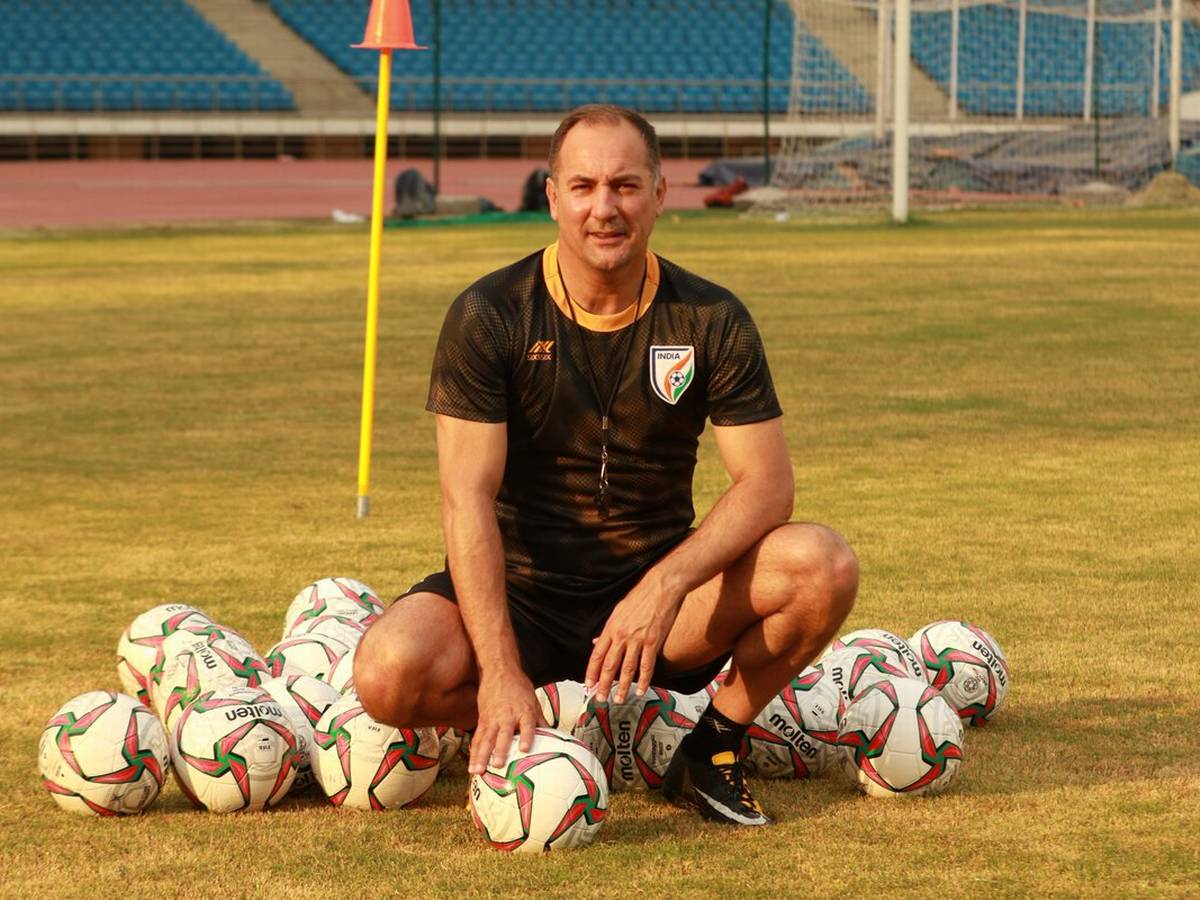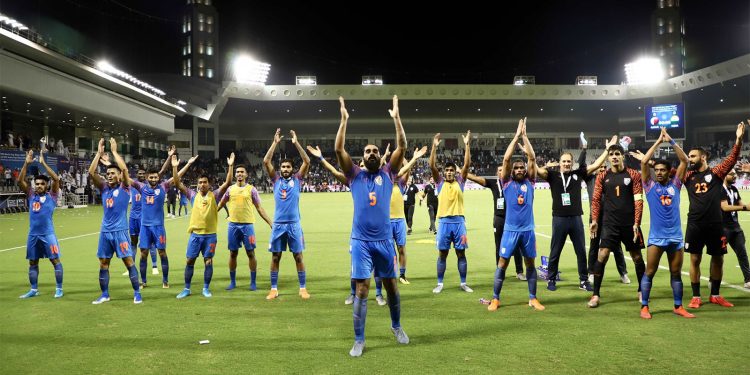As far as Indian football is concerned, there has been a lengthy period of disappointment laced with some flashes in the pan at irregular intervals. If we count the Melbourne Olympics in 1956 in which India made the semifinals, as the benchmark of our glorious past, India failed to even get close to that in the years that followed.
Winning the yellow metals in Asian Games 1951 and 1962 editions were two other attempts to eclipse the ladder. But a sharp fall that followed every success ensured India remained in the gloom of failure rather than basking in the glory.
A world ranking in excess of 100 is a testimony to India’s failure at the international level. It’s not that the All India Football Federation (AIFF) didn’t try to elevate the level, but the efforts went in vain thanks to lack of vision and administrative lacuna.
The word ‘development’ in India is associated with allocation of funds without a goal in mind, which has always raised more questions than it answered. Whether it is the structure of the sport (domestic leagues) in the country or the backroom hiccups, this has been a never-ending saga for Indian football.
Such has been the situation that even world football’s governing body FIFA. It had acknowledged that ‘complex issues’ facing the sport in the country require a ‘prudent and measured approach’.
With three-four clubs making it out among themselves till then, India suddenly felt the need of a national league and hurried call resulted in the staging of the country’s first National Football League (later rechristened I-League) in 1996. It was done to professionalise the set-up, but it actually served no purpose for more than a decade.
However, the big-ticket entry of the Indian Super League (ISL) gave birth to an even more complex structure with the clubs fighting among themselves — this time not on-field, but off it to remain in relevance.
It’s true that the introduction of ISL pumped in more money (especially FSDL and Reliance group), glamour, infrastructure to a certain extent, but it failed to address the issue of ‘football development.’
I-League, which was started 13 summers ago to professionalise the Indian football scenario, has again been pushed to backbench with franchises taking place quietly. Several top tier clubs — JCT, Mahindra & Mahindra, Dempo, Salgaocar faced immediate shut down with a huge fan base. The fans are being forced to support franchises unwillingly, thus reducing the enthusiasm.
Now, when the entire nation wants a single big and elongated league with 20 teams like the ones in European countries, the sport’s governing body (AIFF) is still unfazed. Things turned even worse last June when AIFF announced ISL as the top league.
The frustrations mounted manifold, which is evident from 2017-18 I-League champions Minerva Punjab owner Ranjit Bajaj’s scathing tweet. “Look at what is happening in @IndianFootball…. FSDL RELIANCE are killing @ILeagueOfficial which was awarded ASIA’s best-developing league by @theafcdotcom @FIFAcom…. how can this be done so blatantly ?? Please at least follow the AFC FIFA roadmap!!”
It was in 1964 when India last made a remarkable show in the international arena by making it to the final of the AFC Asian Cup. Since then, it has only been a story of repeated failures.
The next three decades saw India decline from a major football power in the continent, although the team still managed to assert their dominance in South Asia. They won the South Asian Games (1985, 1987) and SAFF Championship in 1993, 1997 and 1999.
Even the dilly-dallying of the AIFF and the government couldn’t stop individual brilliance — though in patches — from achieving personal milestones.
On the other hand, the likes of Bhaichung Bhutias and Sunil Chhetris carved a niche for themselves while looking for greener pastures in other continents. The first one to stand up and be counted was Bhaichung Bhutia, who donned the prestigious Bury FC shirt between 1999 and 2002 making the entire country proud. This had nothing to do with the team’s performance, but an individual brilliance worth mentioning. Sunil Chhetri too followed suit by representing Kansas City Wizards in some nine years ago.

However, India witnessed a massive improvement under the tutelage of Englishman Bob Houghton as the Blue Tigers won the restarted Nehru Cup (2007) defeating Syria in the final followed by the AFC Challenge Cup the next year. It also helped India qualify for the AFC Asian Cup 2011 after a hiatus of 27 years.
“There are no direct targets other than to improve the national team. We qualified for the AFC Asian Cup because we won the AFC Challenge Cup last summer and that made a big difference,” an upbeat Houghton had said in an interview in 2009.
But with Houghton shown the door in 2011 after India’s ouster from the group stages of the Asian Cup, India had forgettable four years. The side slumped to 173rd in the FIFA rankings — their lowest in the history — and the next two coaches Armando Colaco and Dutchman Wim Kovermanns also left without much success leaving a bad taste in mouth.
Stephen Constantine for the second time (first stint being from 2002-2005) and the Englishman did wonders pulling the team up by 76 places to 97th in the FIFA rankings — their best till now. It also included a 13-match unbeaten streak from 2016 to 2018 and qualification for the 2019 AFC Asian Cup — their fourth appearance in Asia’s most coveted tournament.
Despite starting their campaign with a thunderous 4-1 win against Thailand, India’s loss against the hosts United Arab Emirates and then Bahrain to eventually walk out from group stages.
The ouster also meant Constantine quit his job paving the way for the most heavyweight name in that position till now-former Croatia national team coach Igor Stimac. The 52-year-old was also the part of the Croatia support staff that finished third in 1998 World Cup in France.
Stimac’s first assignment was the King’s Cup in June. Although Chhetri & Co. started with a 1-3 defeat against Curacao, the young guns produced a much-improved performance in their 1-0 win over the hosts Thailand, earning accolades from every nook and corner of the country.
According to his wards, ‘Building from the back’ is the new mantra of the Croatian and Stimac wants his boys to play a brand of football which builds up from the back and goes on attack mode in a smooth transition.
“Technically he is very knowledgeable, someone who understands modern football. He is someone who works really hard and is really helpful to all the players. The best part about him that I like is that he is brave. He is someone who wants to see everyone, wants to be fair, which is not very common,” Chhetri said about Stimac.

The results thereafter proved Chhetri’s statement. Though India lost to Oman 1-2 at home in the 2022 World Cup qualifiers, the Blue Tigers rose to the occasion with a 0-0 draw against Asian champions Qatar in their away fixture — probably the best result in about a decade.
“They had more chances and more corners. We also had a few chances, but it’s the experience we have gained (that counts),” Stimac had said. “That’s the beauty of football. Where there is a danger, there’s an opportunity.”
“We played against Qatar and we made space for ourselves even in the last minutes. We made sprints even in the 95th minute, showing a lot of concentration. So we showed good fitness,” he added.
India next play Bangladesh in their next 2022 World Cup qualifying match at the iconic Salt Lake Stadium in Kolkata October 15, where it remains to be seen whether Stimac’s boys can bring in Diwali early this year.
FIFA U-17 WC in 2017
The event was a massive fillip for the sport in the country and it actually put Indian football on the world map. Under Spanish coach Luis Norton de Matos, the Indian U-17 team earned more accolades than criticism throughout the FIFA tourney.
Though India failed to register a single win against Ghana, the United States, and Colombia, the experience gathered from the outings put the boys in good stead. It inspired them so much so that captain Amarjit Singh Kiyam and Komal Thatal even went onto make the senior chart.
History was created when Jeakson Singh Thounaojam scored India’s first-ever goal at a FIFA tourney against Colombia. For the record, India had qualified for the World Cup once in 1950, but due to financial conditions, the trip to Brazil couldn’t be a reality.
In the post De Matos era, the reins of the team were handed over Floyd Pinto — almost a novice in the business — and the Indian has been doing a great work till present. Under Pinto, India scripted history defeating Argentina 2-1 in the Spanish Cotif Cup with Deepak Tangri and Anwar Ali finding the targets.
The U-17 World Cup 2017 also inspired youngsters to take the sport more seriously. The U-16 side under coach and former player Bibiano Fernandez qualifying for the AFC Championship 2020 in Bahrain finishing atop the group in the Qualifiers.
“I am really proud of my boys. But the real challenge begins now. Our preparation for the Finals had already begun after the final whistle,” Bibiano said after their qualification. Not to say the least, the India colts boys also lifted the SAFF U-15 Cup this year beating Nepal at home 7-0 in the final, that too under Fernandez.
FIFA U-17 WWC in 2020
Meanwhile, Indian women also drew attention through their improved performances in recent years. Perhaps this didn’t go unnoticed by FIFA as the sport’s world governing body once more awarded India a high voltage tourney — the U-17 Women’s World Cup 2020.
Koushik Paul







































